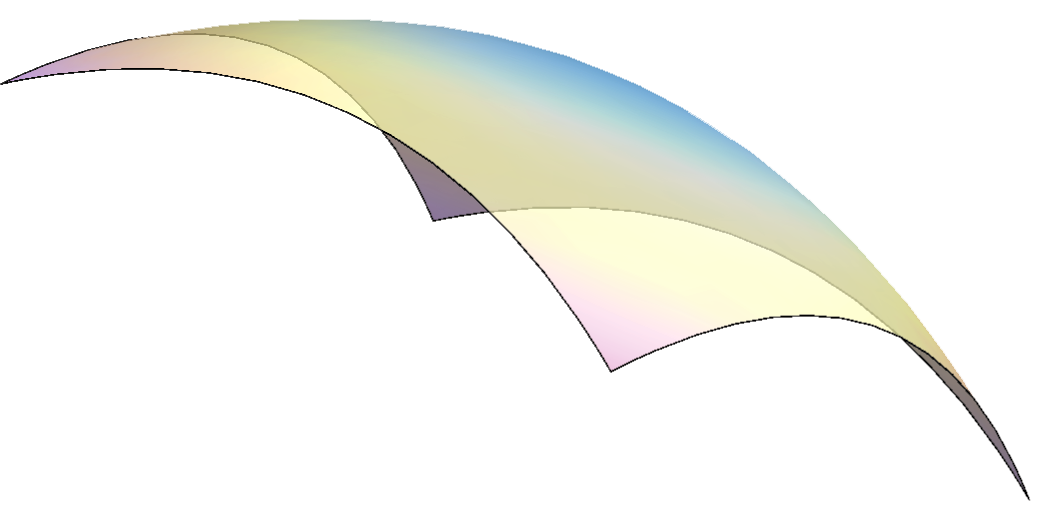
|
A surface is a set of \( \infty^2 \) continuously connected points in the extended euclidean space. |

|
|
There are infinitely many plane curves and space curves that lie on the surface \(\Phi\). We call them curves on the surface \(\Phi\). A line is a tangent of the surface in a point T if it is a tangent line of a curve on the surface with the point of tangency T. |
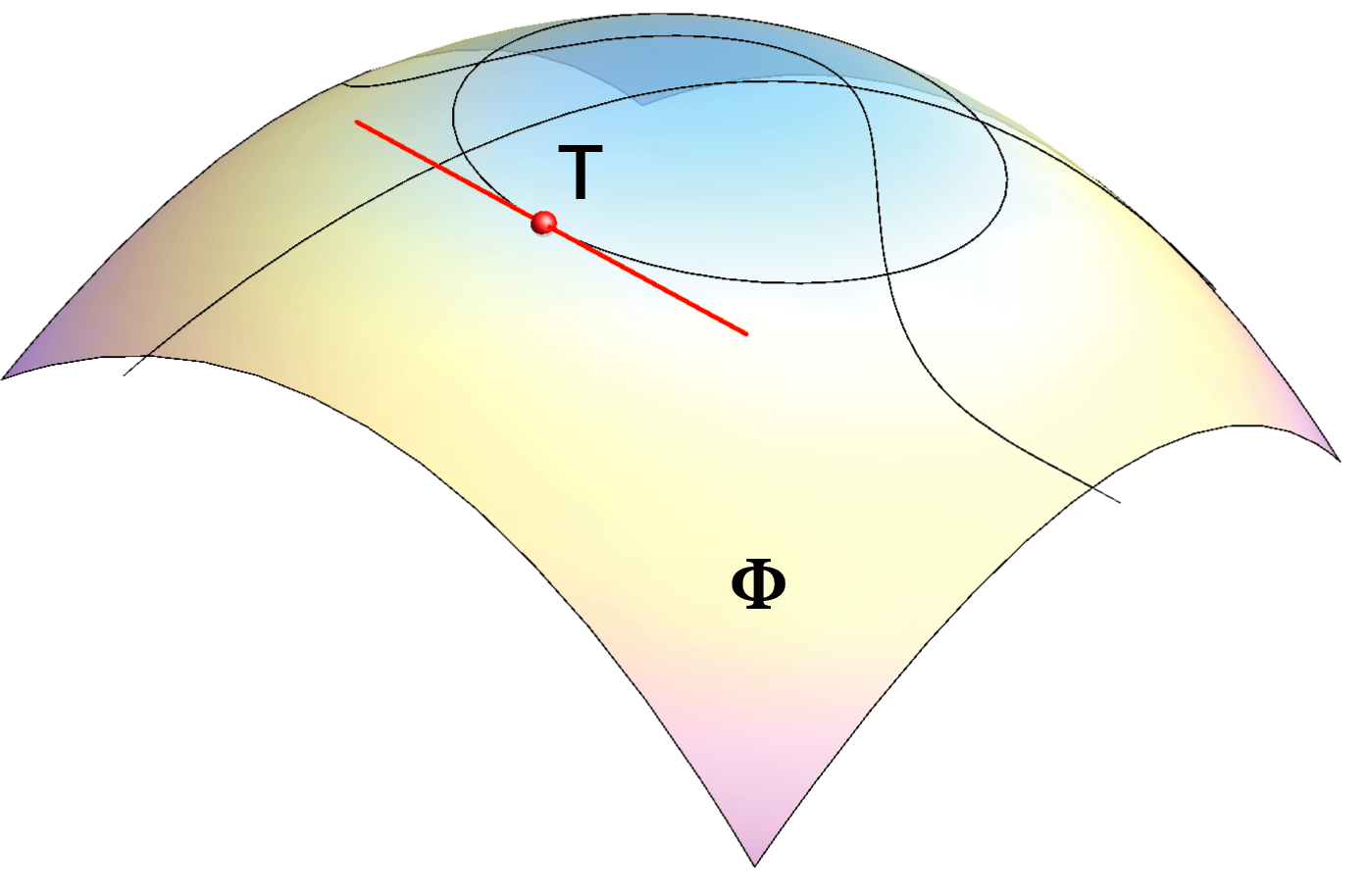
|
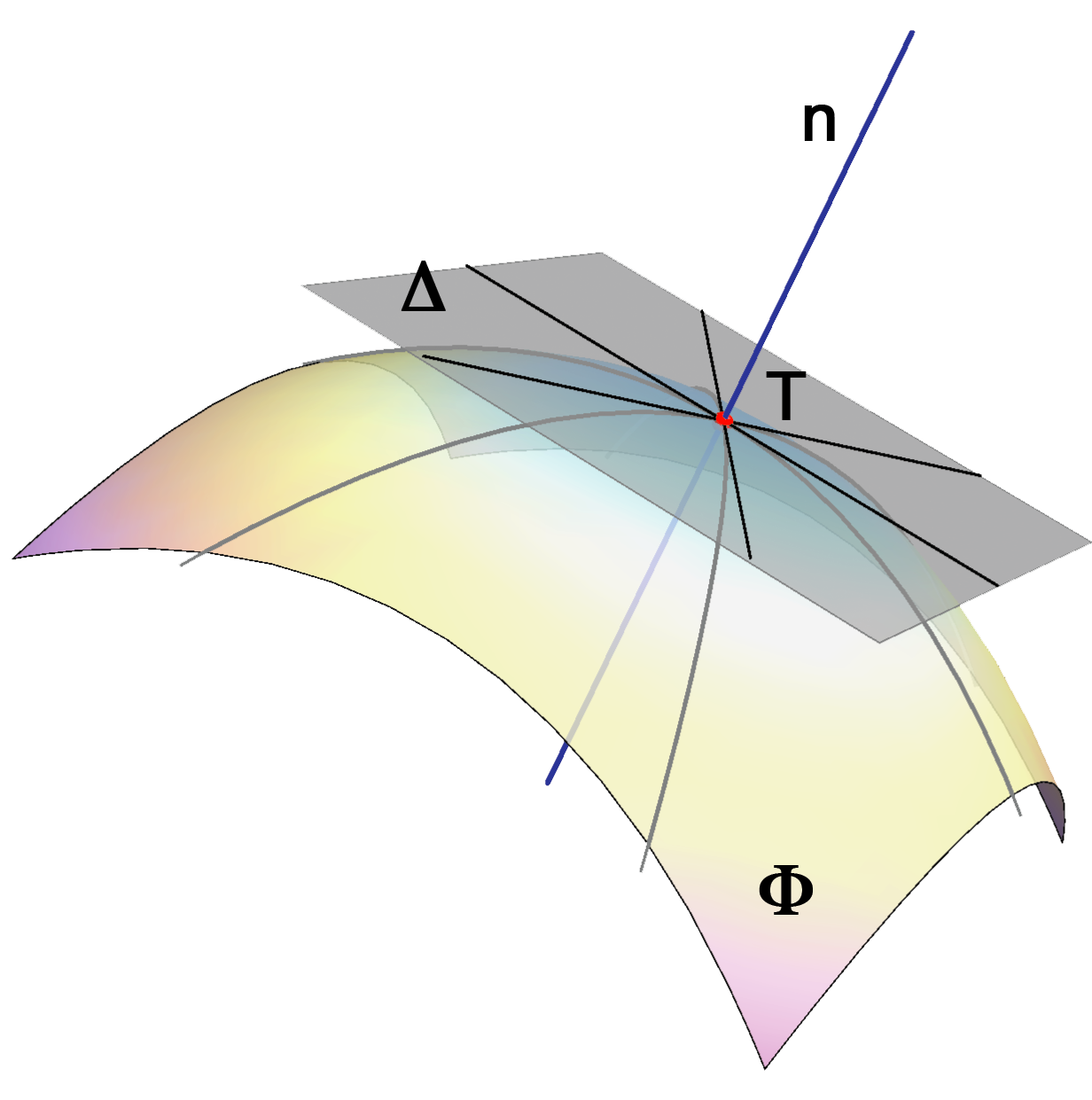
Tangent plane \(\Delta\) and normal line n of the surface \(\Phi\) in T. |
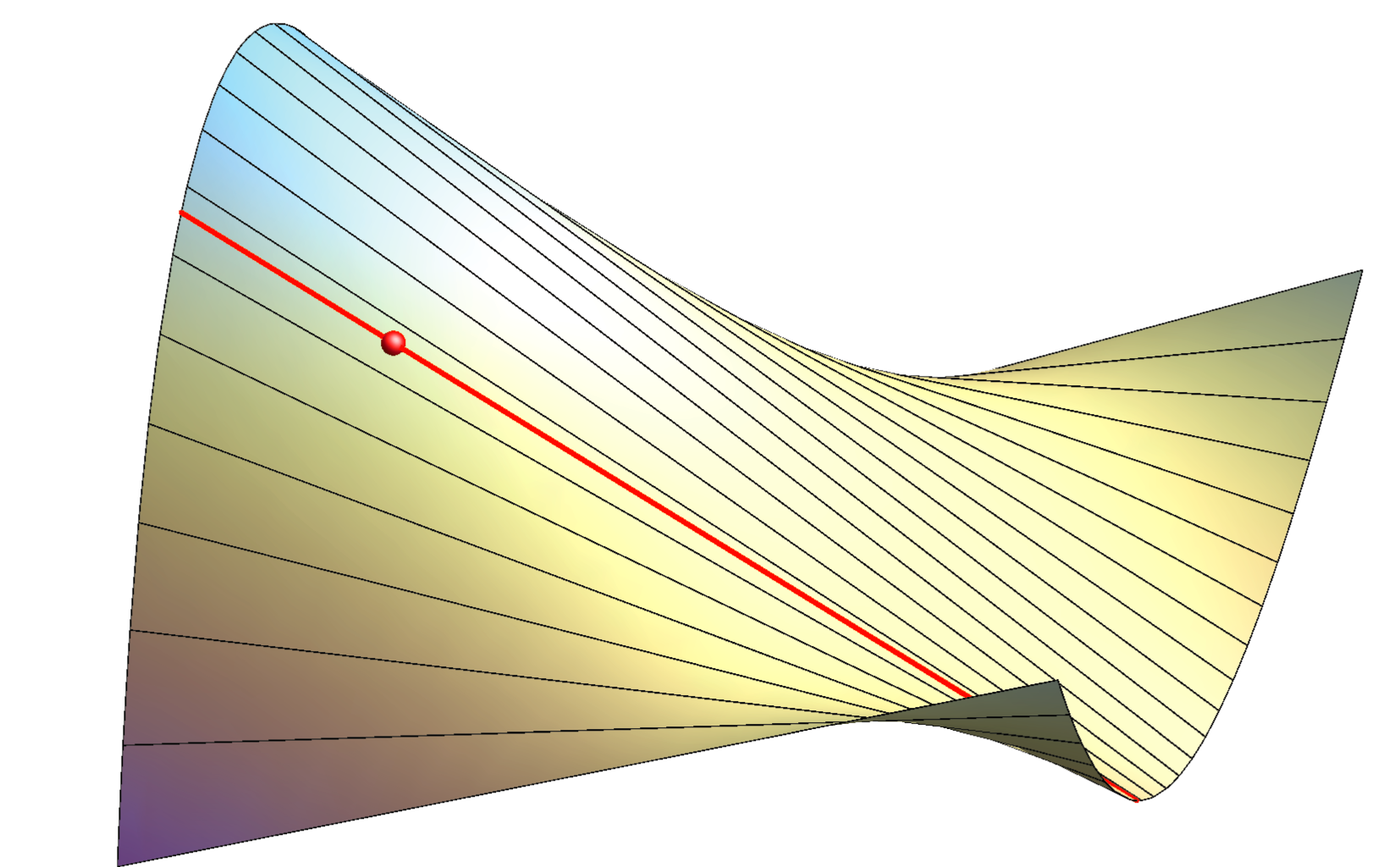
|
right-click \( \rightarrow \) PLAY |
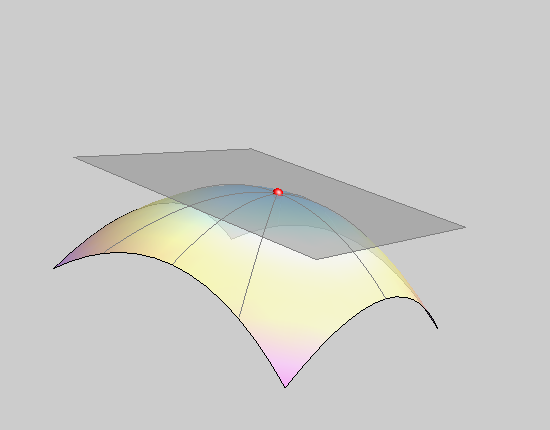
an elliptic point of the surface |
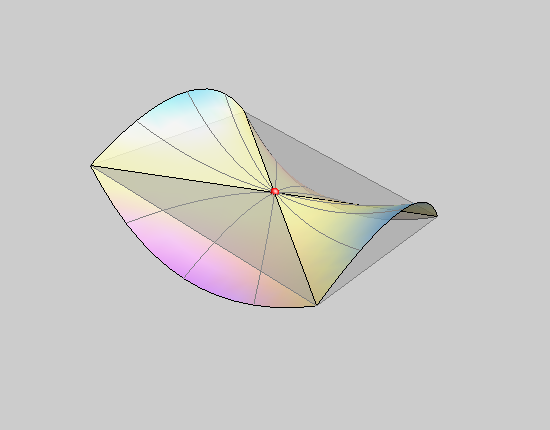
a hyperbolic point of the surface |
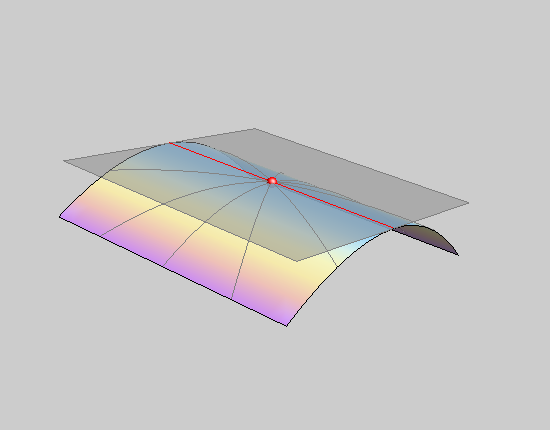
a parabolic point of the surface |
Created by Sonja Gorjanc, translated by Helena Halas and Iva Kodrnja - 3DGeomTeh - Developing project of the University of Zagreb